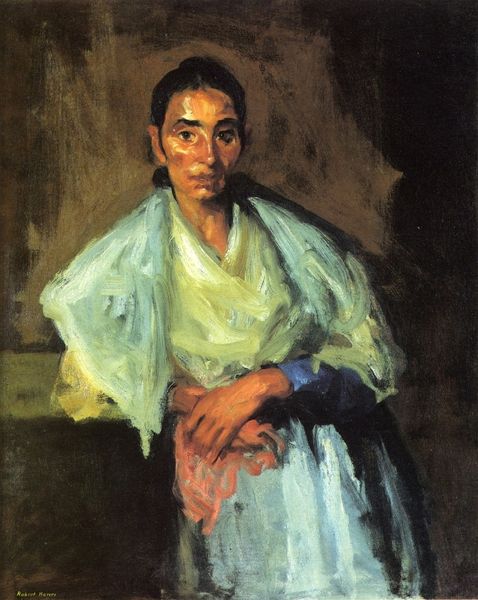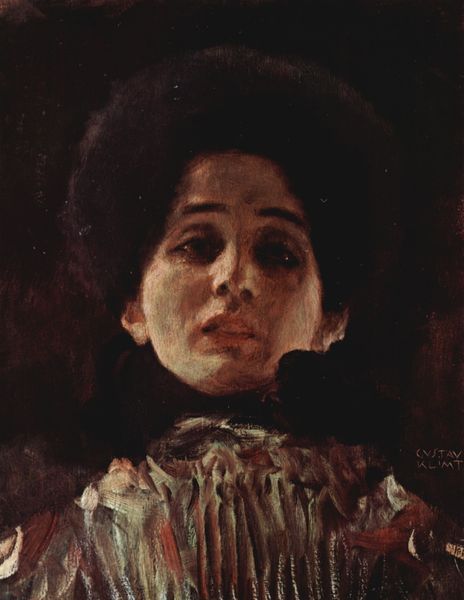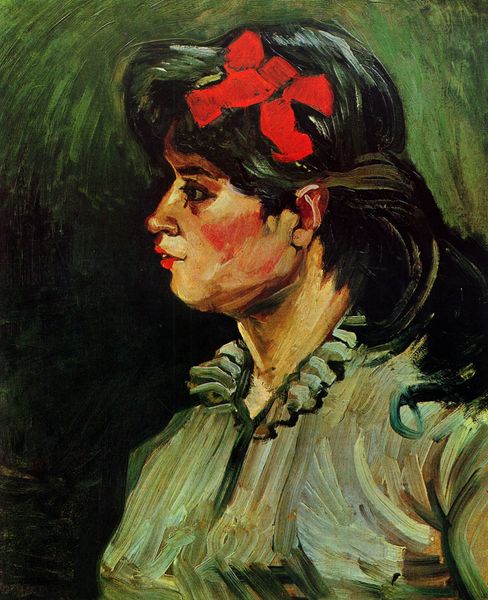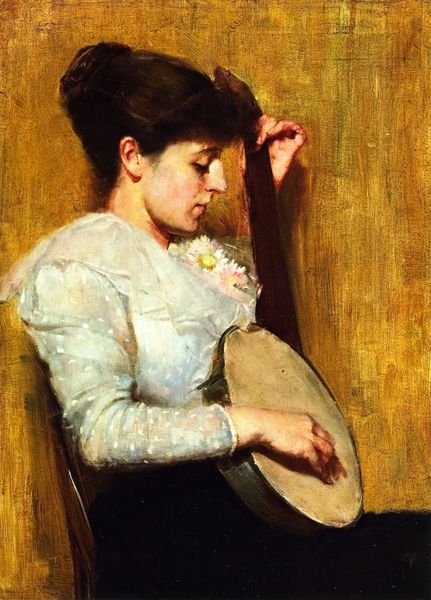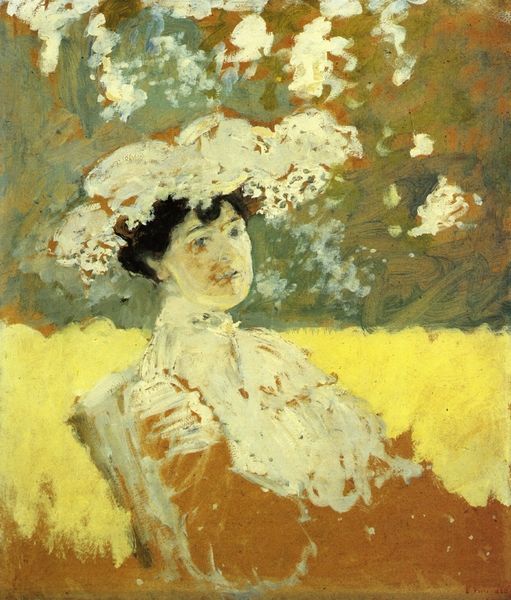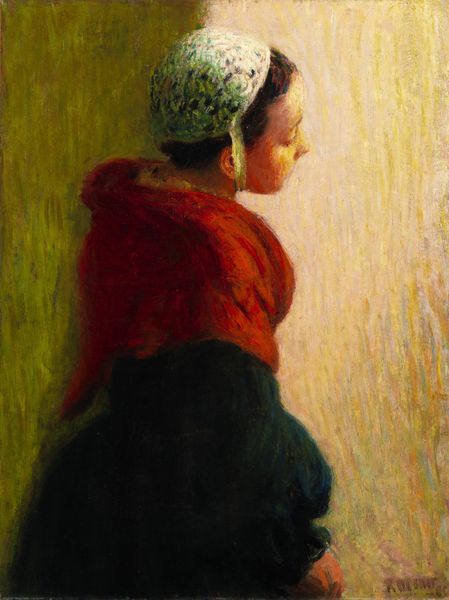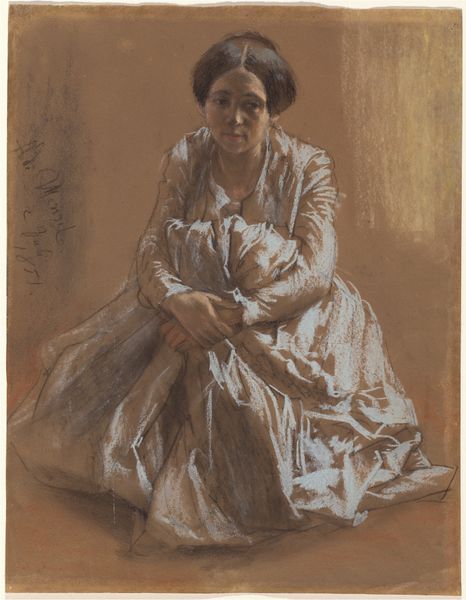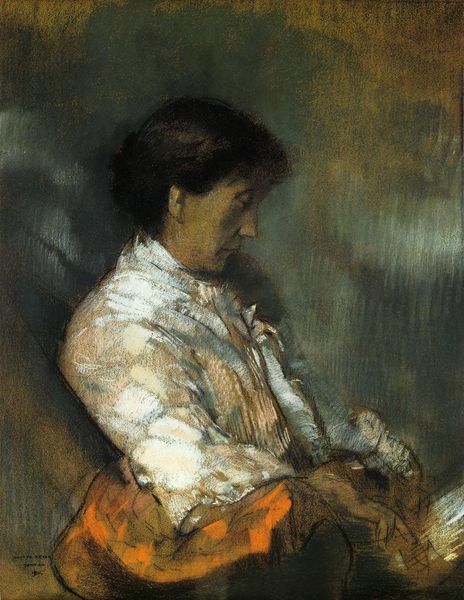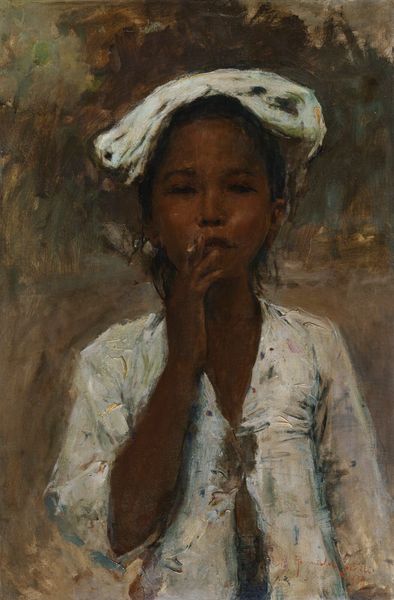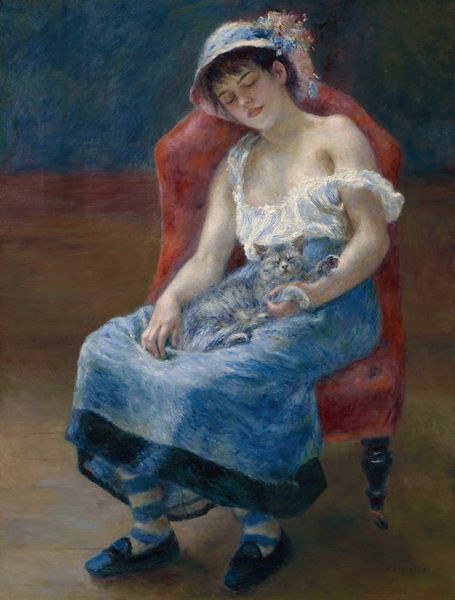
painting, oil-paint
#
portrait
#
self-portrait
#
painting
#
impressionism
#
oil-paint
#
oil painting
#
intimism
Dimensions: 60 x 41.1 cm
Copyright: Public domain
Editor: So, here we have Mary Cassatt's "Portrait of the Artist," painted in 1878 with oil on canvas. It's a self-portrait, and I'm immediately struck by the textures – the almost rough application of paint in the dress contrasted with the softer rendering of her face. What do you see as central to understanding this piece? Curator: It's crucial to consider the materials themselves, how Cassatt employs oil paint not just to represent form, but to embody a social standing. Her clothing, a textured white dress, signals a leisure class existence made possible through particular economic arrangements. What labor went into the dress itself, and how does Cassatt, as a female artist of her time, engage with notions of "feminine" artistry by embracing "craft-like" textures using an industrial product such as mass produced oil paints and canvasses? Editor: That's fascinating! I hadn't thought about the connection between the materials and the portrayal of social status so directly. The textures almost seem to push against the formal constraints typical of traditional portraiture. Curator: Precisely! It challenges traditional boundaries between "high art" and mere "decoration." The choice to depict herself with this hat, these details - isn't just personal expression, it is indicative of consumer culture, the burgeoning ready-to-wear markets and industrial production. How are these affecting artistic modes of production and representation? Is Cassatt making a conscious point about what it means to be a working artist amidst consumer culture? Editor: So, she is reflecting upon those industrial shifts as an Impressionist? I appreciate that—thank you. That tension really clarifies the impact. Curator: Absolutely. We have to consider what artistic labor means and the social statement is there too. Editor: Thanks so much for shedding light on the materiality and social implications; I'll look at art differently now. Curator: Likewise. Considering artistic methods alongside material analysis helps us to truly appreciate art’s social dynamics and values.
Comments
No comments
Be the first to comment and join the conversation on the ultimate creative platform.
